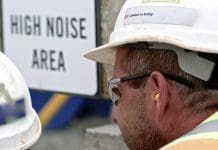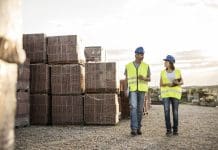The UK government has given its clearest signal yet that it’s serious about decarbonising construction as it laid out its Timber in Construction Roadmap late last year, says David Hopkins, chief executive of Timber Development UK
The Timber in Construction Roadmap is a policy document that outlines how the UK Government intends to expand the safe use of timber in construction as well as increase domestic wood supply.
The policy roadmap is split into seven priority themes identified by both government and industry in the Timber in Construction Working Group. Timber Development UK was a key member of this working group alongside industry partners such as Confor and the Structural Timber Association.
Each theme looks to identify barriers to timber use, and what policy solutions and industry actions are available to address them.
The roadmap was created to action the commitments in the government’s Net Zero Strategy and England Trees Action Plan, which pledged to increase the safe use of timber in construction and reduce embodied carbon in the built environment.
The built environment accounts for 25% of our national emissions and must be decarbonised if we are to reach net zero by 2050. Timber is excellent at reducing these emissions because:
- It acts as a form of carbon capture and storage, as the carbon dioxide sequestered by trees is stored in the wood product for the product’s lifetime.
- It increases the number of trees grown in sustainably managed forests, which helps to sequester even more carbon dioxide.
- It requires very little energy throughout the supply chain of harvesting, processing and manufacturing.
- It displaces carbon-intensive materials to reduce the carbon footprint of a building.
Since COP26, when we launched the Time for Timber Manifesto, government advisory bodies such as the Climate Change Committee and Environmental Audit Committee have all independently called on the government to recognise these benefits.
A solid foundation to build on
The Timber in Construction Roadmap marks a seminal moment for the timber industry, with the UK government now making a cast iron commitment to expanding timber use in construction.
For many years there have been mixed signals around timber in construction from government, as while promises would be made to one department to boost industry, others would push policies that undercut the safe use of timber in construction.
For example, the Department for Levelling Up set up the Timber in Construction Working Group in 2021 to expand timber construction, while simultaneously pushing forward a consultation on banning the use of combustible materials above 11m.
This document now provides the consistency industry has been asking for, setting out clear intentions to increase timber use in construction, particularly in housing.
The roadmap also outlines the government’s intentions to support key areas essential to timber expansion. Modern Methods of Construction, for example, is mentioned frequently in the document, with the government promising to support this sector “to deliver quality homes more quickly and more sustainably”.
In a recent APPG report, we called on the government to provide both effective environmental regulation and market incentives to expand timber construction in the UK. The roadmap feels like a watershed moment in achieving this aim.
The Timber in Construction Roadmap is only the start of dedicated decarbonisation efforts
Though there are many positives from the roadmap, it must be viewed as a good start rather than the finished article. We are particularly disappointed to see a watered-down commitment on embodied carbon regulation, which has now been pushed back to 2025, having previously been promised this year.
Embodied carbon limits are essential to expanding timber use, incentivising developers to use low-carbon materials in construction. This was identified by industry as the key policy change required to expand timber use at the recent APPG for the Timber Industries Luncheon.
There is also a lack of policy detail throughout the report, with many commitments appearing flimsy and difficult to measure.
What next?
Overall, despite some drawbacks, the roadmap must be viewed as a positive development for our industry. It provides a great foundation for future policy progress and signals clear intent from the government to decarbonise construction with wood.
The Timber in Construction Working Group will continue to meet regularly to track delivery of the actions outlined in the document and to scope and implement new actions as needed.
TDUK, along with our industry partners, will continue to work extensively with the government to ensure the commitments are actioned and, in some cases, expanded in the coming years.
David Hopkins
Chief executive
Timber Development UK
Tel: +44 (0)20 3205 0067

















